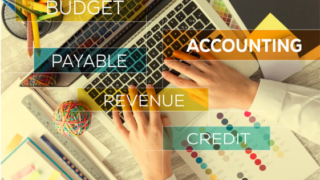The balance sheet is an important financial statement that reflects assets, liabilities, and equity according to Circular 200/2014/TT-BTC. It is a tool that helps businesses assess their financial situation and optimize management. This article provides instructions on the structure, preparation, and key considerations to ensure that the balance sheet is accurate, transparent, and in compliance with regulations.
1. What is a Balance Sheet?
Definition of a Balance Sheet
A balance sheet is a financial statement that reflects the total situation of assets, liabilities, and equity of a business at a specific point in time. It is one of the most important reports, helping businesses track their financial situation and make effective business decisions. The balance sheet shows the balance between total assets and total capital sources, which helps evaluate liquidity, financial safety, and capital efficiency.
Role of the Balance Sheet in Financial Reporting
The balance sheet helps businesses control their assets and financial obligations, while also providing important information to investors, banks, and tax authorities. Companies can use the balance sheet to assess liquidity, financial risk, and capital efficiency. Additionally, the balance sheet serves as the basis for preparing other financial reports such as the income statement and cash flow statement.
Principles for Preparing a Balance Sheet
- Historical Cost Principle: Items are recorded at their original cost, without adjusting to market prices.
- Matching Principle: Revenues and expenses must be recognized in the same accounting period.
- Prudence Principle: Do not overstate the value of assets or underestimate the liabilities.
- Consistency Principle: The same method of recognition should be applied consistently across multiple accounting periods to ensure comparability.
Latest Updates According to Circular 200/2014/TT-BTC
Circular 200/2014/TT-BTC, issued by the Ministry of Finance, provides detailed regulations on how to prepare and present the balance sheet. According to this, businesses must comply with accounting standards to ensure financial transparency and accurately reflect their business situation. The key updates in this circular include specific guidelines for classifying assets, liabilities, and equity, making it easier for businesses to prepare financial reports.
Differentiating the Balance Sheet from Other Financial Statements
The balance sheet differs from the income statement and cash flow statement in that it reflects assets and capital sources at a specific point in time, while the other two reports provide information about profits and cash flows over a period. This distinction helps managers gain a comprehensive view of the financial situation of the business.
2. Structure of the Balance Sheet According to Circular 200
Current Assets in the Balance Sheet
Current assets are assets that can be converted into cash within 12 months or within the company’s operating cycle. These are essential for ensuring the short-term liquidity of the business. Key components of current assets include:
- Cash and cash equivalents: Includes cash, demand deposits, and short-term deposits with a maturity of less than 3 months. These are the most liquid assets, enabling businesses to meet financial obligations easily.
- Short-term receivables: Includes amounts due from customers, intercompany receivables, advances, and other receivables. Companies need to manage receivables carefully to avoid bad debt risks.
- Inventory: Includes raw materials, work in progress, finished products, goods, and tools. Inventory needs to be controlled to avoid losses and ensure a stable cash flow.
- Short-term financial investments: Includes marketable securities, short-term investments with a maturity of less than 12 months.
- Other current assets: Includes VAT receivables, prepaid expenses, and other short-term assets.
Long-Term Assets and Classification
Long-term assets are assets with a useful life of over 12 months and are not easily converted into cash. Long-term assets help businesses sustain operations and generate economic value in the future. Key types of long-term assets include:
- Tangible fixed assets: Includes buildings, machinery, equipment, vehicles, and office furnishings. These assets must be depreciated according to accounting regulations.
- Intangible fixed assets: Includes land use rights, patents, trademarks, software, and other intangible assets.
- Investment property: Includes real estate held by the business to generate rental income or for capital appreciation.
- Long-term financial investments: Includes investments in subsidiaries, associates, or other investments with a maturity of over 12 months.
- Other long-term assets: Includes long-term prepaid expenses, deferred tax assets, and other unclassified long-term assets.
Liabilities and Financial Obligations
Liabilities represent the financial obligations of the business to third parties, including both short-term and long-term debts.
- Short-term liabilities
These are debts that need to be paid within 12 months or within one business cycle, including:- Short-term loans: Bank loans with a maturity of less than 12 months.
- Accounts payable: Debts to suppliers for goods or services not yet paid.
- Taxes and payable to the state: Includes VAT, corporate income tax, and import/export taxes.
- Other short-term payables: Includes accrued expenses, salary funds, social insurance, and other short-term liabilities.
- Long-term liabilities
These are debts with a maturity of over 12 months, including:- Long-term loans: Bank loans for investment activities.
- Issued bonds: Fundraising through bond issuance.
- Deferred income tax liabilities: Corporate income tax that is temporarily not payable but will be incurred in the future.
Equity and Reserves
Equity represents the capital invested by the owner or shareholders, reflecting the actual value of the business. Key components of equity include:
- Owner’s equity: The initial or additional capital contributed by the shareholders.
- Retained earnings: The portion of after-tax profit that is not distributed but retained for reinvestment.
- Reserves: Includes financial reserves, development investment reserves, and welfare reserves.
In addition, equity reflects adjustments such as asset revaluation differences, capital surplus, and treasury shares.
Financial Balance Principle in the Business
The balance sheet adheres to the principle:
- Total assets = Total capital (Liabilities + Equity)
This means that the business must ensure that all of its assets are financed with corresponding sources, either from loans or from equity. - Safe financial structure: The ratio of liabilities to equity should not be too high to avoid financial risk.
- High liquidity: The company needs to ensure that current assets are sufficient to cover short-term liabilities.
- Optimizing working capital: Ensuring stable cash flow to maintain business operations.
3. How to Prepare the Balance Sheet According to Circular 200
Guidelines for Recognizing Assets and Capital Sources
When preparing the balance sheet, businesses must follow these principles:
- Assets must be recorded at historical cost: This means that assets should be recorded at their initial value at the time of purchase, without adjustments for market prices, unless otherwise specified.
- Liabilities must be fully reflected: The business must record all loans, debts, and taxes payable to ensure the accuracy of the balance sheet.
- Equity must accurately reflect the reality: This includes contributed capital, retained earnings, and financial reserve funds, ensuring a full representation of the company’s financial structure.
Key Indicators in the Balance Sheet
The balance sheet contains many indicators, but there are several key figures that businesses need to focus on:
- Total assets: Includes both current assets and non-current assets, reflecting the total value of the company’s assets.
- Short-term and long-term liabilities: Reflects all the financial obligations of the business to partners, banks, the government, and other parties.
- Owner’s equity: Represents the actual capital belonging to the business, including retained earnings for reinvestment.
How to Verify the Accuracy of the Data
- Reconcile the balance sheet with the accounting ledger to ensure the data matches.
- Check the balance between total assets and total capital sources (liabilities + equity).
- Verify that receivables and payables accurately reflect the actual amounts.
Common Mistakes When Preparing a Balance Sheet
- Confusing assets and expenses: Some businesses may mistakenly record long-term investment costs as operational expenses, which can impact financial results.
- Not updating the latest data: If the data on the balance sheet does not match reality, the business may face difficulties when preparing tax reports or raising investment funds.
- Omitting or incorrectly recording payables and receivables: This can lead to financial imbalances and affect the transparency of financial reports.
4. Sample Balance Sheet and How to Fill in Information
Sample Balance Sheet According to Circular 200
Below is a representation of how to present a balance sheet with key indicators according to Circular 200:
| Indicator | Code | Amount |
| Current Assets | 100 | XX.XXX |
| Long-term Assets | 200 | XX.XXX |
| Total Assets | 270 | XX.XXX |
| Liabilities | 300 | XX.XXX |
| Owner’s Equity | 400 | XX.XXX |
| Total Capital Sources | 440 | XX.XXX |
Guidelines for Filling in Asset Indicators
- Cash and Cash Equivalents: Enter the amount of cash on hand and bank deposits according to the cash book.
- Receivables: Record accounts receivable from customers and other receivables.
- Inventory: Record the actual value of inventory based on the accounting method currently applied.
Guidelines for Filling in Liabilities and Owner’s Equity Indicators
- Short-term Liabilities: Include short-term loans, accounts payable, and taxes payable.
- Long-term Liabilities: Include long-term loans, bonds issued, and deferred income tax liabilities.
- Owner’s Equity: Enter the owner’s capital contributions, retained earnings, and reserve funds.
5. Important Notes When Preparing the Balance Sheet
The balance sheet is an essential part of a company’s financial reporting, helping to accurately reflect the financial situation at a specific point in time. Preparing the balance sheet according to Circular 200/2014/TT-BTC requires adherence to accounting principles and ensuring accuracy in recognizing assets and capital sources. Hopefully, the above guidelines will help you better understand how to prepare and present the balance sheet accurately and effectively.
Learn more: FINANCIAL REPORTS: A DETAILED GUIDE TO EACH ESSENTIAL DOCUMENT
For any inquiries, contact Wacontre Accounting Services via Hotline: (028) 3820 1213 or email info@wacontre.com for prompt assistance. With a team of experienced professionals, Wacontre is committed to providing dedicated and efficient service. (For Japanese clients, please contact Hotline: (050) 5534 5505).






